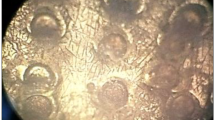Abstract
Reactive infiltration of precursor ceramics (e.g., the formation of an alumina-aluminum composite by reaction of silica in liquid aluminum) is a low-cost and versatile method of creating materials with interpenetrating co-continuous ceramic and metal phases. By controlling the composition and microstructure of the precursor and the composition of the reaction bath, one can control the structure and properties of the resulting material. This paper summarizes preliminary attempts to use these routes to create next-generation materials for automotive brake rotors. Two types of materials were tested. The first is a two-level composite of a co-continuous alumina-aluminum structure that surrounds SiC particles that provide thermal conductivity. For higher-temperature use, the aluminum alloy is replaced with aluminum-bronze. Both materials show friction and wear properties similar to cast iron, but with half the density and better thermal conductivity.
Similar content being viewed by others
References
www21.porsche.com/pccb/default.asp?market=PCGB.
M.C. Breslin, “Process for Preparing Ceramic-Metal Composite Bodies”, BFD, Inc., U.S. patent 5,214,011 (25 May 1993).
K.G. Ewsuk et al., Metall. Mat. Trans., 27A (8) (1996), pp. 2122–2129.
M.C. Breslin et al., Ceram. Eng. Sci. Proc., 5 (4) (1994), pp. 104–112.
M.C. Breslin et al., Mat. Sci. Eng., A195 (1995), pp. 113–119.
G.S. Daehn et al., Acta Mater., 44 (1) (1996), pp. 249–261.
W. Liu and U. Köster, Mater. Sci. Eng., A210 (1996), pp. 1–7.
A. Farmer (Senior Research Thesis, Department of Materials Science and Engineering, Ohio State University, 2000). Note: Weibull statistics are based on over 40 measurements for each material.
M.Y. Chen and M.C. Breslin, Wear, 249 (2002), pp. 868–876.
L. Ceschini et al., Wear, 216 (1998), pp. 229–238.
V. Imbeni, I.M. Hutchings, and M.C. Breslin, Wear, 235 (1999), pp. 233–235.
D. Herling et al., PNNL-DOE report, Friction Pair Testing of Candidate Metal Composite Brake Materials (2002), full report available at www.exceramaterials. com/MMC_Friction_PNNL_Report.pdf.
www.eere.energy.gov/vehiclesandfuels/pdfs/ program/2004_hv_optimization.pdf.
Author information
Authors and Affiliations
Rights and permissions
About this article
Cite this article
Daehn, G.S., Breslin, M.C. Co-continuous composite materials for friction and braking applications. JOM 58, 87–91 (2006). https://doi.org/10.1007/s11837-006-0235-1
Issue Date:
DOI: https://doi.org/10.1007/s11837-006-0235-1




